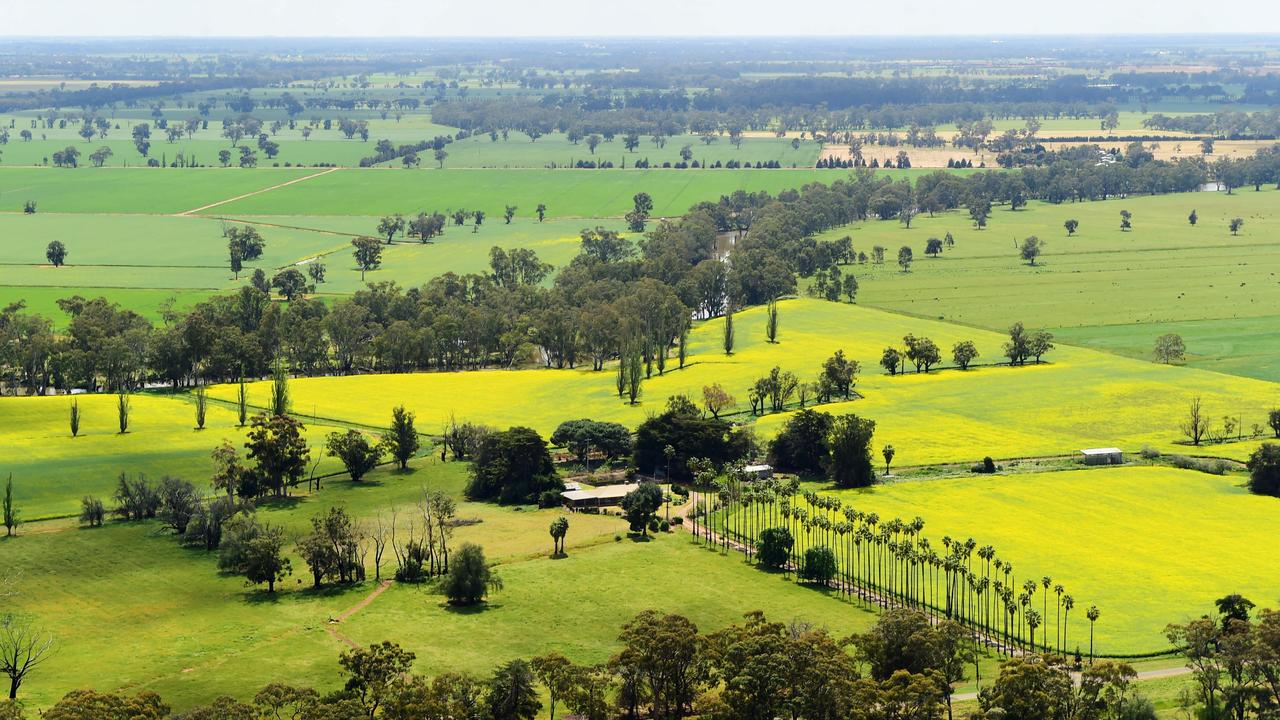The buyers ‘doubling down and going harder’ to own Aussie farms
Premier agricultural assets remain in a position to command significant offers in the market as buyer confidence returns to the market.

Australia’s rural property has continued to stratify throughout this year with premier agricultural assets in a position to command significant offers, while lower-tier holdings languish in the market.
In recent months capital from powerful North American investors was behind more than $1.1 billion in a pair of mammoth sales, while well-established pastoral families in the northern states positioned themselves strongly to compete for property to expand their portfolios.
JLL Agribusiness director Geoff Warriner says there is a disconnect in the market between the values vendors are hoping to achieve, compared to the levels where cautious buyers are sitting.
“The market is slower and there are a lot of properties on the market during this spring selling season,” Warriner says. “It is also taking longer to complete transactions and we are seeing varied interest from institutions and farming families dictated by the type and quality of the asset.
“In the northern market, so cattle properties in Queensland and the Northern Territory, the market is holding, compared to in the southern market, where in the past six to 12 months we have seen the values come off 10-15 per cent.
“Livestock markets, which crashed down to a 12-year low, have recovered, while not to the heights we saw three years ago, they are healthy again. The season is also looking strong for these northern livestock producers.”

A key offering which demonstrated the sensitivity of the market was the public auctioning of the 29,798-hectare Fairfield Aggregation, a seven-farm portfolio of properties at Bauhinia in Central Queensland from within the Ray Scott Pastoral Company.
Selling agent Elders scheduled an auction for the assets on October 2 following “exceptional demand” since listing the portfolio earlier this year, where five of the farms were sold for more than $110 million. The premier property in the portfolio, the 10,522-hectare Fairfield Station, was sold under the hammer for $49 million to the Dennis family via Twin Hills Cattle Company.

Further north in the Sunshine State a private Queensland-based family paid $77.75 million for the 31,474-hectare Gattonvale Holding, located 32km from Collinsville, after it was sold by the Cox family following 62 years of ownership. Perhaps the most notable deal of the year so far has been the sale in August of Australian Food and Agriculture’s portfolio in NSW to the NASDAQ-listed and Cayman Island incorporated Agriculture and Natural Solutions Acquisition Corporation, a special purpose acquisition company, for a monstrous $780 million. ANSC is backed by American Riverstone Investment Group and Impact Ag Partners and was founded by Bert Glover.

The AFA portfolio, which was owned by a partnership including the family of late stockbroker Colin Bell, comprises 18 farms near Deniliquin, Hay and Coonamble and almost 54,700 megalitres of water licences in the Murrumbidgee and Murray irrigation areas. The Deniliquin portion of the portfolio covers about 123,000 hectares including landmark stations Wanganella and Boonoke and their world-renowned Merino studs.

The AFA deal came in the same week that renowned and retiring cotton and cattle farmers Robert and Jennie Reardon finalised the sale of their 26,885-hectare Worral Creek Aggregation, near Goondiwindi in the Border Rivers region of Queensland, which included 65,900 megalitres of water entitlements.
A subsidiary of US-based agricultural investor Farmland Reserve, Alkira Farms, which is backed by the Church of Jesus Christ of Latter-day Saints, acquired the massive portfolio for between $300 million and $350 million. As part of the deal, Melbourne-based Warakirri Asset Management entered into a new strategic relationship with Alkira Farms.

LAWD senior director Danny Thomas, says it is clear North American institutional investors are a still chasing quality Australian farmland.
“We are seeing the same players and they are doubling down and going harder,” Thomas says. “It is important to note it took a year for the AFA portfolio sale and a couple of years for the Worral Creek sale, and at the time when these assets were first listed for sale, the ultimate buyers weren’t in the market.
“We are also seeing a new wave of institutions from the UK and Europe who are also interested in the row cropping, both irrigated and dryland, almonds, permanent plantings and they love cotton too.”
Thomas says confidence is starting to return to the lower end of the farmland market, but at a fairly slow pace.
“At about a $50 million-level there is actually more liquidity above it than below it, as strange as that sounds,” he says.
“The stalemate in the market for purchases under $20 million, where buyers were holding their breath, is starting to ease as they reactivate.”





